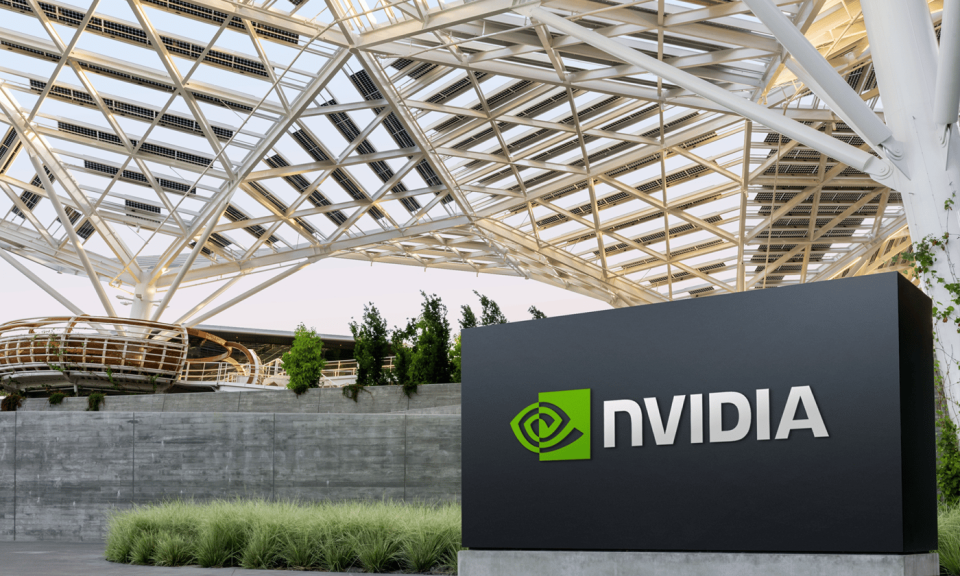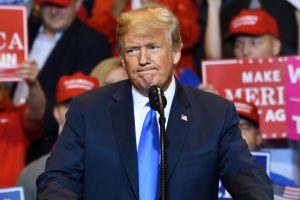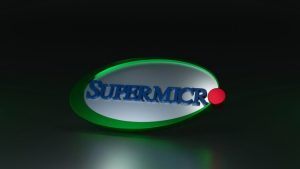
Nvidia (NASDAQ: NVDA) supplies the most powerful graphics processing chips (GPUs) for developing artificial intelligence (AI) models. The company has an impressive list of customers who are spending truckloads of money to fill their data centers with those chips as they battle for AI supremacy.
In fact, Nvidia CEO Jensen Huang believes AI infrastructure spending will top $1 trillion over the next five years, and his company is likely to be the biggest winner because it has a dominant market share in the GPU space.
In an interview with CNBC last week, Huang made a series of positive comments about Nvidia’s new Blackwell GPU architecture. Here’s why every investor in Nvidia stock should be excited.
Blackwell will be transformative for Nvidia and AI developers alike
Last year, Nvidia’s H100 data center GPU set the benchmark for AI development. It’s still in hot demand today, but it was superseded by the H200, which is capable of performing AI inference (ingesting live data into AI models to make predictions) at twice the speed.
But Nvidia’s Blackwell architecture delivers a major leap in performance. The new Blackwell-based GB200 NVL72 system is capable of performing AI inference at a staggering 30 times the speed of the equivalent H100 system. Plus, each individual GB200 GPU is expected to sell for between $30,000 and $40,000, which is in the ballpark of what many data center operators originally paid for their H100 GPUs.
In other words, Blackwell is going to deliver an incredible improvement in cost efficiency. That’s really important because most AI developers rent data center computing capacity by the minute from tech giants like Microsoft and Amazon. Blackwell will bring down the cost of deploying more powerful large language models (LLMs), which will make advanced AI applications affordable for a wider group of consumers and businesses.
During its fiscal 2025 second quarter (ended July 28), Nvidia generated a record $26.3 billion in data center revenue, up 154% from the year-ago period. The company — along with most Wall Street analysts — expects data center revenue to continue surging higher for the foreseeable future.
However, there have been questions about how long tech giants can continue spending so much money on their AI infrastructure. Microsoft, for example, reported $55.7 billion in capital expenditures (capex) during its fiscal 2024 (ended June 30), much of which went toward data centers and chips. The company plans to spend even more in fiscal 2025. How sustainable is this level of investment across the tech industry?
In September, Oracle founder Larry Ellison told analysts about a dinner he attended with Tesla CEO Elon Musk and Jensen Huang. He recalled Musk and himself begging Huang for more GPUs so they could bring their AI aspirations to life, but the chip giant simply can’t keep up with demand.
In a CNBC interview last week, Huang said, “Blackwell is in full production, Blackwell is as planned, and demand for Blackwell is insane.”
He also said, “Everybody wants to have the most, and everybody wants to be first” when it comes to Blackwell, which really highlights the existence of an AI arms race in the tech industry.
Besides Microsoft, Amazon is on track to pour over $60 billion into capex, including AI-related investments, in calendar 2024. Alphabet will spend around $50 billion, and Meta Platforms plans to spend up to $40 billion. Oracle’s capex totaled $6.9 billion in its fiscal 2024 (ended May 31), and it intends to double that number in fiscal 2025.
If AI infrastructure spending tops $1 trillion in the coming years, as Huang expects, then Nvidia’s data center revenue likely has years’ worth of growth left in the tank.
Nvidia stock is currently trading about 11% below its all-time high. Wall Street is forecasting $4.02 in earnings per share for the company’s fiscal 2026 (which begins at the end of Jan. 2025), giving the stock a forward price to earnings (P/E) ratio of 31.8.
The Nasdaq-100 technology index sports a similar forward P/E ratio of 29.8, so investors who are willing to hold Nvidia stock for at least the next couple of years are buying in at a compelling price, despite the stock’s incredible ascent since early 2023.
Don’t miss this second chance at a potentially lucrative opportunity
Ever feel like you missed the boat in buying the most successful stocks? Then you’ll want to hear this.
On rare occasions, our expert team of analysts issues a “Double Down” stock recommendation for companies that they think are about to pop. If you’re worried you’ve already missed your chance to invest, now is the best time to buy before it’s too late. And the numbers speak for themselves:
-
Amazon: if you invested $1,000 when we doubled down in 2010, you’d have $20,579!*
-
Apple: if you invested $1,000 when we doubled down in 2008, you’d have $42,710!*
-
Netflix: if you invested $1,000 when we doubled down in 2004, you’d have $389,239!*
Right now, we’re issuing “Double Down” alerts for three incredible companies, and there may not be another chance like this anytime soon.
*Stock Advisor returns as of October 7, 2024
John Mackey, former CEO of Whole Foods Market, an Amazon subsidiary, is a member of The Motley Fool’s board of directors. Randi Zuckerberg, a former director of market development and spokeswoman for Facebook and sister to Meta Platforms CEO Mark Zuckerberg, is a member of The Motley Fool’s board of directors. Suzanne Frey, an executive at Alphabet, is a member of The Motley Fool’s board of directors. Anthony Di Pizio has no position in any of the stocks mentioned. The Motley Fool has positions in and recommends Alphabet, Amazon, Meta Platforms, Microsoft, Nvidia, Oracle, and Tesla. The Motley Fool recommends the following options: long January 2026 $395 calls on Microsoft and short January 2026 $405 calls on Microsoft. The Motley Fool has a disclosure policy.
Jensen Huang Just Delivered Incredible News for Nvidia Stock Investors was originally published by The Motley Fool


